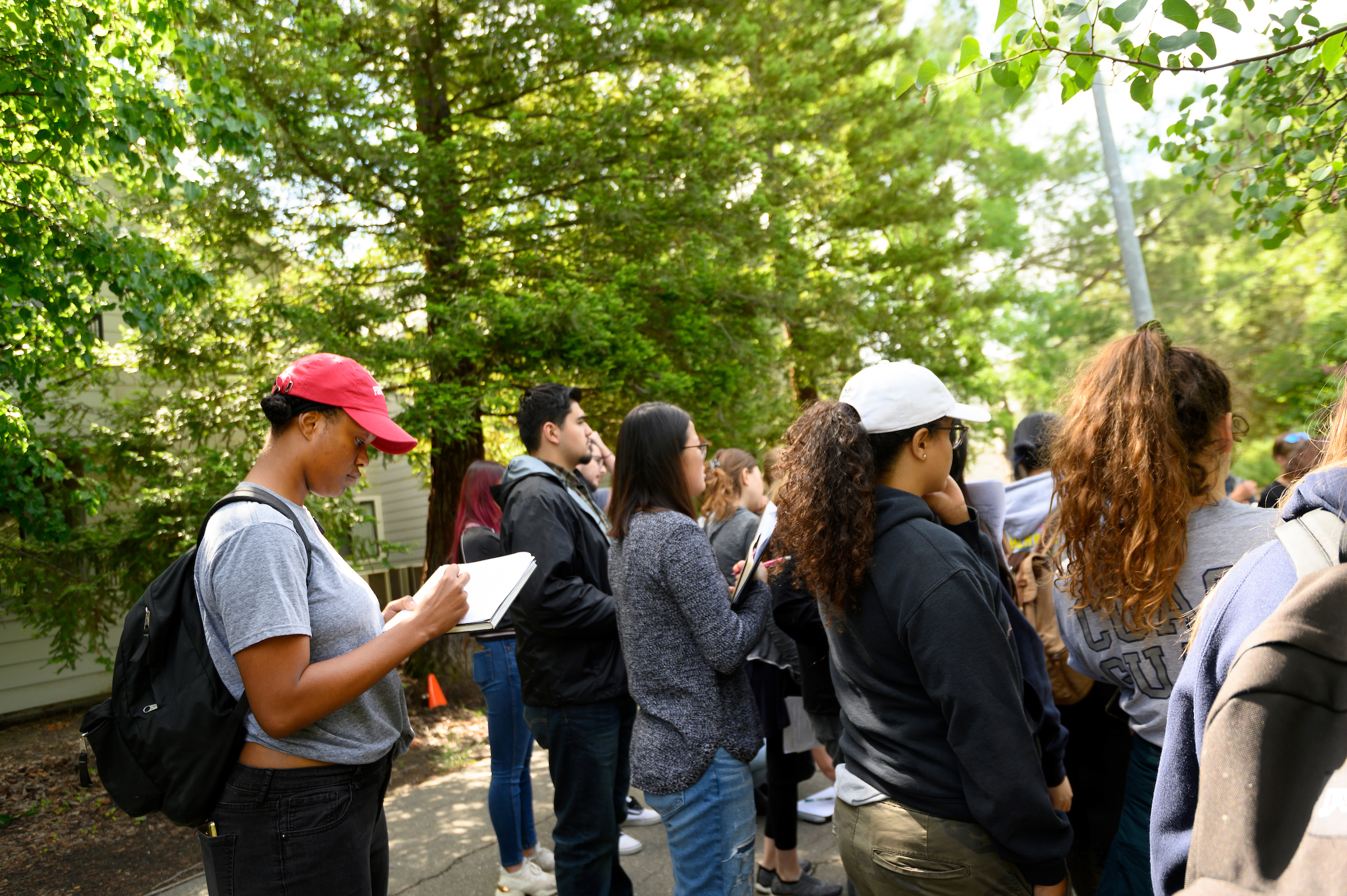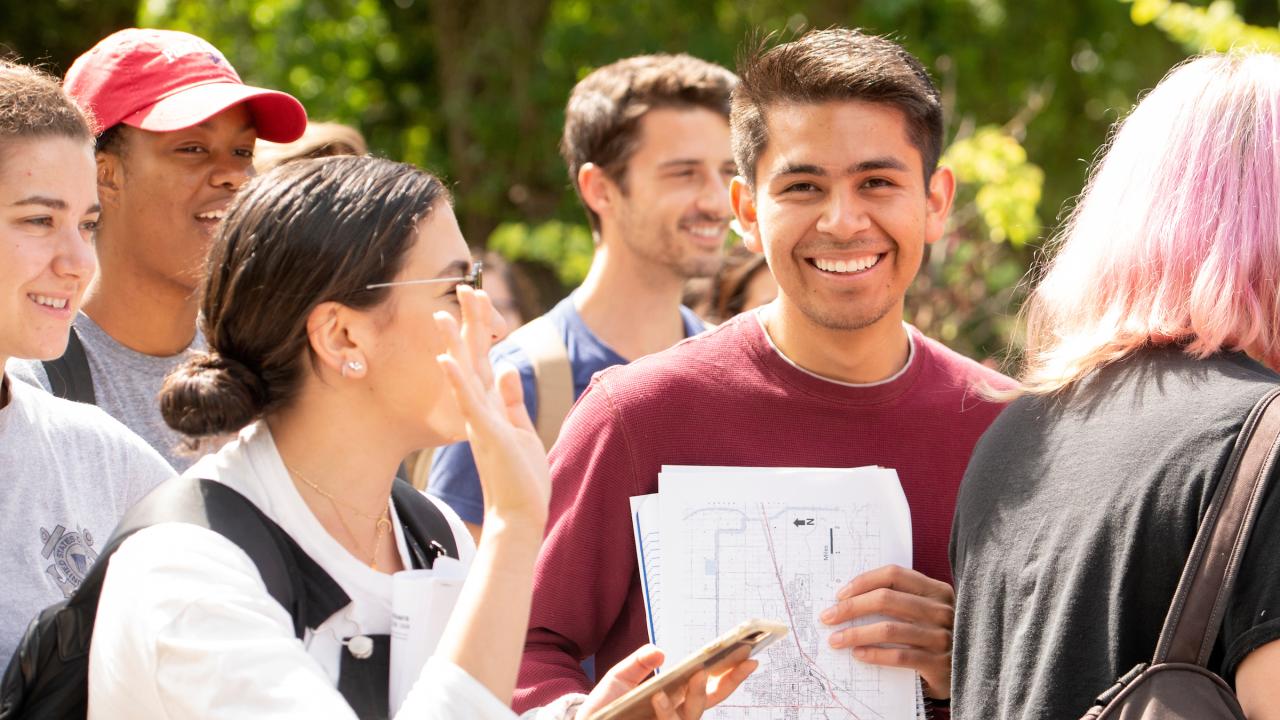A couple of sustainable environmental design students are tackling food waste right at home. Their research project in the UC Davis Dining Commons revealed that unlimited entry into dining halls, smaller portion sizes, and eliminating cafeteria trays helped to cut back on food hoarding and waste. This is just one of many problems that sustainable environmental design students, commonly referred to as SED majors, are looking to solve.
SED is one of UC Davis’ steadily growing majors as more students are interested in pursuing a career that aims to resolve climate change issues. The major provides students with a solid base of analytical tools while also equipping them with leadership and effective communication skills for their future careers.
Suraya Akhenaton is a fourth year SED major and minoring in environmental policy analysis and planning. She transferred as a third-year student from the University of Portland, where she was an environmental science major. Reflecting on her choice, Akhenaton said she was thrilled because SED “combines creativity, environmentalism and social justice.”
Her passion for sustainable design led Akhenaton to pursue the Green Fellowship for the 2021-22 school year, which she was awarded. The Green Fellowship selects two students each year based on their proposed project plans for the Sustainable Living and Learning Communities. This is just one of many opportunities at UC Davis that allows for hands-on experience and practical use of classroom knowledge for SED majors.
Akhenaton has also been involved with the UC Davis Arboretum, where she has been learning about plant propagation and ecology to help with her Green Fellowship project.
Internships, research and study abroad opportunities

One of the major perks of being at a research university is that there are plenty of choices for internships and research projects.
In talking with Sharla Cheney, undergraduate advisor for landscape architecture and sustainable environmental design, she gave examples of the kinds of internships SED students have participated in, including with the UC Davis Arboretum, nonprofit organizations in Davis, and city planning or local planning departments. As always, remember the Internship and Career Center as a resource for related opportunities.
Cheney explained that SED students are able to find their interests through coursework. From there, they search for internships that align with these interests. SED opens the door to several pathways, as varied as city planning departments, national parks or architecture firms. She said there is no standard internship or research work that students are required to take.
Popular study abroad programs allow SED students to apply their learning to different cultures. They can choose from internships in environment, green technology, sustainability located in New Zealand, Thailand, Spain, and more. Students learn about policies and designs implemented internationally and give them a clearer perspective on academic and career goals.
Coursework in sustainable environmental design

Cheney explained that upper-division courses are mostly in landscape architecture (LDA), which are project-based courses. These classes require students to solve real-world problems and strategize solutions, which equips them with leadership, public speaking and organizational skills.
While SED doesn’t have traditional tracks or an emphasis, it instead includes upper-division, restricted electives that offer in-depth exploration. The four elective clusters are:
- Society, Culture, and Sustainability
- Ecological Systems and Restoration
- Design and Building
- Government and Planning
The great thing about these clusters is that students can mix and match courses from any of the four listed to fill out their upper-division coursework electives. The courses range from political science to architecture and sociology courses. This allows for branching out into different fields, which provides students with insight on career options.
Besides all the electives students can take, Cheney praised SED for the space it allows students to take a minor. “Around half of our students usually minor in something, and this doesn’t have to be related to the major,” Cheney said, adding, “We’ve had students minor in dance, theater and several more.”
Among popular minors for SED majors are environmental policy analysis and planning, climate science and policy, community development, and plant biology. But the opportunities for minors are endless.
So, is sustainable environmental design the right fit?

When asked how SED students fare in the career world, Cheney said, “We’ve received feedback from employers and graduate school admission committees that our students are extremely well-prepared for their future endeavors.”
Public speaking, community engagement and collaboration are just some of the practical skills that SED students gain through their years at UC Davis. Through their undergraduate education, they can start careers as urban planners, community organizers, researchers and policy analysts. Some continue on to graduate studies in landscape architecture, urban planning, architecture, and environmental sciences. With the support of peers, advisers and faculty, SED is a tight-knit community.
“You pretty much have the same people in all your classes because our major is fairly small so you get to know everyone,” Akhenaton said. “We want each other to succeed and it’s a very uplifting and caring community, and I am really glad that I get to be a part of this.”
Sudhiksha Shanbhag Kota is a senior at UC Davis majoring in cognitive science. She works as a fellow with UC Davis Strategic Communications.
